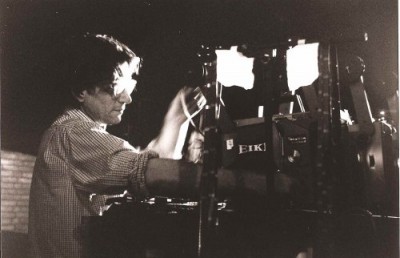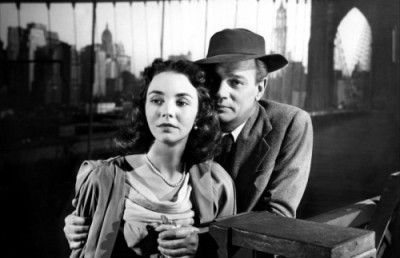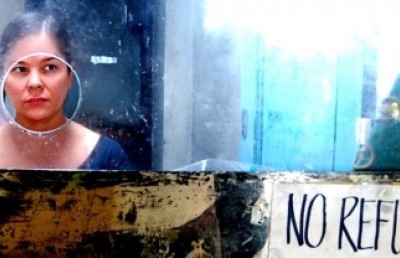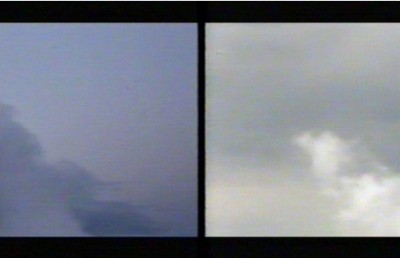Satyajit Ray’s The Apu Trilogy: His/(s)tory Restored
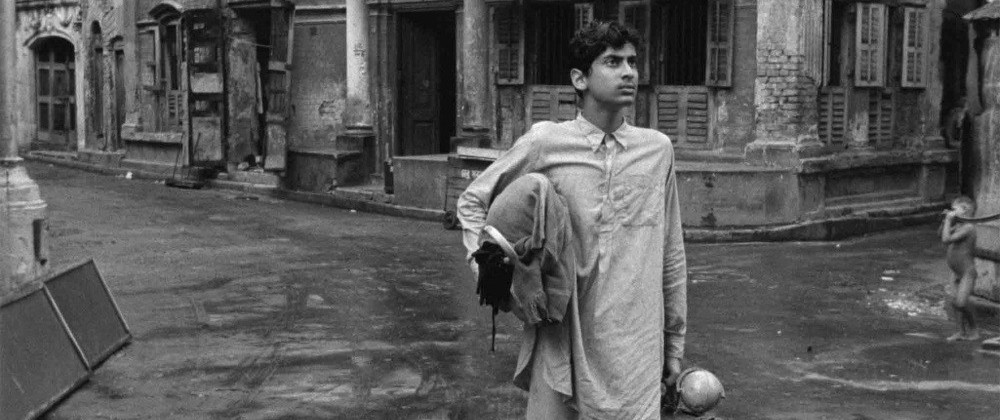
Films are not unlike memories. Memories fade over time, we gradually lose bits and pieces of details: images, sounds, feelings etc. Film negatives go through a similar corrosive process of ageing – distortion, dirt and scratches take their toll. This results in a disruption of the immersive experience of the audience. Sounds get distorted and muffled, images get blurry, some parts get so corroded that some of the shots/scenes have to be cut entirely. To prevent this gradual destruction of timeless classics of cinema, restoration and preservation is of utmost importance. It is from this point of view that the restoration work done to the celebrated Indian film-maker Satyajit Ray’s The Apu Trilogy (Pather Panchali, Aparajito and Apur Sansar) assumes importance.
Ray’s debut film which is the first of The Apu Trilogy – Pather Panchali – caused a sensation when it was released in 1955. Indian film critics and connoisseurs had never viewed an Indian film like this. “When I finally decided to become a film-maker,” says Ray, “…I had set my mind on breaking all manner of conventions” (17). A low budget film in black and white with amateur actors and actresses playing the character roles, it was shot with a 16mm camera, “using an unadorned style of photography” (Ray, “Under Western Eyes” 80), mostly in a village in West Bengal: “We took shots in the dim light of a mango grove, we shot in pouring rain, and we shot in the falling light of dusk” (Ray, “My Life” 18). It was a realistic film, devoid of any dross or melodrama. It did not conform to the conventional formula of Indian film-making: songs, dance, and elements of romance and melodrama. Hence he was not certain about the reception of the film in India. He was also sceptical about its reception by the Western audience. In an article titled “Under Western Eyes” (originally published in Sight & Sound, 50th Anniversary issue, Autumn 1982, later included in the volume Deep Focus), he asks, “Why should a Western audience care for a downbeat tale of poverty in a remote Indian village? … Has any Indian film ever worked with a Western audience – especially one that eschewed all the trappings of the exotic? No tigers, no maharajas, no fakirs, no snake charmers, no nautch girls …” (71-2). Yet Pather Panchali (S.Ray, Song of the Little Road, 1955) received a thumping ovation from both the Indian and Western viewers. It was then followed by Aparajito (S.Ray, The Unvanquished, 1956) and Apur Sansar (S.Ray, The World of Apu, 1959), both of which are now considered to be classics.
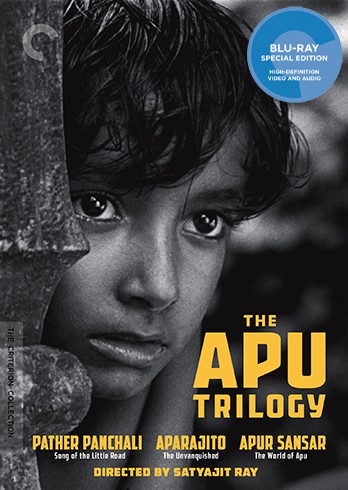
A neo-realist film, Pather Panchali won the “Best Human Document” award at Cannes film festival, 1956. The very special quality that makes this trilogy so special, as Mamoun Hassan points out, is its expression of humanity. Girish Shambu describes the trilogy as ‘“total cinema”: a potent and expressive combination of shot composition, human (and/or non-human) figures, setting, sound design, and movement – in other words, the “universal” language of mise-en-scène’ (35).
Based on the Bengali author Bibhutibhushan Banerjee’s novels Pather Panchali and Aparajito, The Apu Trilogy narrates the story of the birth and growth of Apurbakumar Ray (or Apu), a person of artistic sensibilities who refuses to tread the beaten track of life. One watches Apu being born and his life as a child in Pather Panchali (1955) which portrays the social lives in the rural Bengal of the 1920s. It depicts the hardships and the joys the family goes through, how Apu’s mother Sarbajaya manages to raise her children on her husband Harihar’s meagre earnings. One sees how Apu and his sister Durga enjoy life to the fullest despite the severe financial hardships. Apu suffers his first tragedy when his sister suddenly dies. The film ends on a hopeful note as they leave their village for Benares in search of a new beginning. The second film Aparajito (1956) shows Apu’s family starting a better life in the holy city of Benares. One watches Apu growing up, mingling with other children in the city. It depicts how they survive another cruel blow of fate when Apu’s father passes away unexpectedly. Aparajito depicts Apu’s self-discovery. He realises the worth of education, he rebels against his mother who wants him to be the village priest with a stable income. Apu starts his school life. From there one watches him grow up to be a fine young man, studying in a college in Calcutta, dreaming of a better future. He suffers yet another setback when his mother Sarbajaya dies. In the third and the final film, Apur Sansar (1959) Apu is seen struggling to make a living. Despite his financial worries, Apu is an optimist. He enjoys life and the adventures it brings. He is also a budding novelist. Apu gets married to Aparna and starts a life based on uncertainty and hope. As suddenly as he comes to know the joy of conjugal love, he loses Aparna who dies in childbirth. From then on one sees Apu’s journey from desperation and hopelessness to salvation – in the form of his child, Kajal. Gradually, the father and the son develop a bonding. The film ends with the promise of a new happy life with his son.
Considering the fact that The Apu Trilogy, which is a narrative of human relationships told against the backdrop of poverty and deprivation in the rural Bengal of the early twentieth century, is a landmark in the history of Indian cinema for several reasons, we need to be careful about how to preserve the materially vulnerable film negatives. These are the living evidence of the national culture and heritage. Gulzar, the famous Indian film-maker and lyricist, rightly comments, “Handling old films, restoring them and preserving them is like preserving your culture” (“Restoring Film”). But Indian films have been mostly neglected when it comes to their preservation and restoration. There have been sporadic attempts at restoration, but those were few and far between. Shivendra Singh Dungarpur, the founder-director of the Film Heritage Foundation, India, observes that “[w]e have lost a colossal amount of our cinematic heritage and we continue to lose more every day….” (“Restoring Film”). I shall now try to elaborate on this aspect.
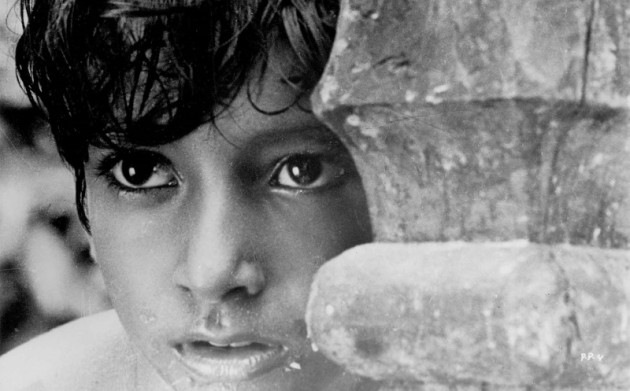
Pather Panchali
Films, as we know, are audio-visual representations of a culture in a specific point of time. Like old paintings, they too need healing touches to restore their physical health. The colours in the paintings fade and crack as time progresses. And thus they need periodic help from professionals to restore them, as far as possible, to their former glory. Films are no different. A team of professionals carry out a step-by-step process of restoration. It is an expensive process that is highly technical and difficult to carry out. Nevertheless, it is necessary that the films that captivated the audience in the past should continue to do so in the future. Younger generations need to be reminded of their nation’s history and heritage – architecture, literary works, paintings and films are inseparable parts of the cultural heritage of a country. It is perhaps also necessary that a wider, global audience in the future generations should get to access the same magic experience. Films in particular speak an international language of sound and image that can be appreciated by an international audience. In this sense they transcend national, linguistic and cultural boundaries.
The deplorable condition of the old Indian films is realised when one tries to get a hold of Satyajit Ray’s works in a good condition. Most of his films have started to deteriorate because of a lack of proper preservation effort by the producers and distributors who worked with him in the past. Many films like The Apu Trilogy and Jalsaghar (The Music Room, 1958) are available to the Indian viewers on the DVDs that produce distorted soundtrack and have plenty of scratches, dirt and loss of focus, ruining the viewing experience. Even certain shots were in such a bad condition that they had to be cut. One can find a warning label on the Pather Panchali (released by Angel Studio, 2013) DVD stating, “The film is very old and it is likely to have a few cuts in the picture which is regretted.” Until the recent restoration carried out by Criterion this had been the viewing experience of The Apu Trilogy. If this situation were allowed to continue, the future generation of film viewers would have had to watch a pale shadow of the original masterpiece. The award of the Oscar for Lifetime Achievement to Satyajit Ray in 1992 appears to be a turning point in this respect because the deplorable condition of Ray’s existing prints came to the notice of the prominent people in the film circle. It was clear that if something was not done immediately, Ray’s films would be lost to the future generations for good. The Merchant Ivory Foundation released new prints of The Apu Trilogy based on existing materials. These prints were marginally better, but it could be clearly seen that these had still retained the impurities that the older prints already had. The Merchant Ivory print of Aparajito had issues with colour tones. There are parts that come out as mildly sepia tinted. The scene depicting Sarbajaya’s death, for instance, loses much of its dramatic impact because of the instability of the whiteness and contrast levels.

Aparajito
The Academy of Motion Picture Arts and Sciences took note of the above situation and in 1993 they initiated a project to preserve and restore Ray’s films. Original negatives were sent to the Henderson Film Laboratory in London. Unfortunately, a great tragedy struck the world of films in July, 1993 when a fire broke out in the lab and destroyed or severely damaged many precious film negatives stored there. Among them were Ray’s film negatives. The Apu Trilogy appeared to have been damaged beyond any hope of redemption. Fortunately, the director of the Academy Film Archive decided to ship all of Ray’s negatives and film cans to the Academy of Motion Picture Arts and Sciences, Los Angeles, USA where they were stored with care for possible future restoration efforts. In the meantime the audience worldwide were stuck with the flawed versions of The Apu Trilogy that was already available. Some private companies attempted to restore the films digitally. The results were not impressive. Details were lost, damaged shots were cut, the original creations of the artist was lost to the world for all practical reasons. Some twenty years later, in 2013, The Criterion Collection (a famous American video-distribution company already known for their impressive restorations of many film classics) decided to start afresh a full scale restoration effort of The Apu Trilogy. The damaged, burnt negatives were sent to L’Immagine Ritrovata (a film restoration laboratory in Bologna known to have restored classics back to their former glory). After hours of intensive work that included ‘rehydration’ (1 part glycerol, 1 part acetone, 3 parts water), use of pin-registered wet-gate scans and immensely time consuming manual repairs – forty percent of Pather Panchali and sixty percent of Aparajito were salvaged. Apur Sansar was restored from a fine grain master and various duplicate negatives. Criterion took over the digital restoration in its own laboratory. The end result was a 4K restoration that turned out to be magnificent.1 The images are almost perfect save a few, faint scratches and other noise that Criterion chose to ignore, stating that digitally correcting these faults would leave visible traces of correction, such as a loss of sharpness/details. Dirt, scratches and noise are almost imperceptible in the Criterion version. The colour black feels deep and real to the eye. The mono-aural Dolby certified soundtrack is free of hisses, clicks and thumps. Together with the distraction-free viewing, this results in an experience that is perhaps not dissimilar to watching The Apu Trilogy when it was first released.
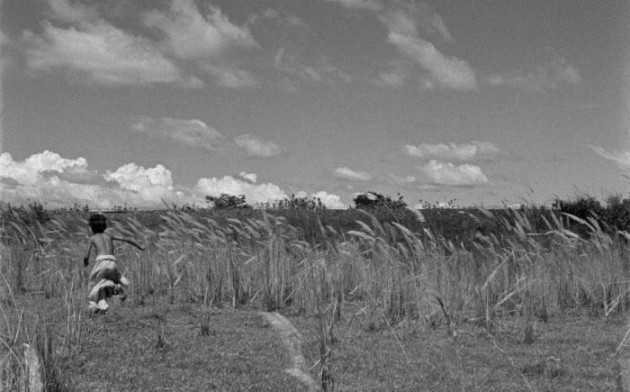
Pather Panchali
This high-resolution version satisfies expectations of the members of the modern audience who have grown used to watching films in high definition. These films now can be watched on 4k compatible television sets, resulting in an ultra-high detailed viewing experience. The subtitles are newly translated too, which are pleasantly free of errors. Satyajit Ray’s films have a distinct visual quality that is almost lyrical. Marie Seton observed in The Portrait of a Director: Satyajit Ray (1972) that “Ray’s ability to convey ‘even half formed thought or feeling, a passing fancy’ which, even before sub-titled, made Pather Panchali understandable to the people who did not know the Bengali language” (105). In Pather Panchali, where Apu and his sister Durga are running through the kash- flower fields to watch the train pass by (suggesting the pristine innocence and curiosity of these children located in a remote village) is certainly one of the most memorable scenes in the history of film-making. Watching it without the screen flickering, without dirt and scratches and other distractions, one can feel the sense of wonder and visual poetry that the scene conveys. Equally appealing is the scene where monsoon is heralded, when the camera observes the play of the wind on the pond, bugs flitting across its surface and lotus leaves turning over in the monsoon wind. The scene is languidly shot, the camera slowly taking in all the details of the beautiful tapestry of nature of a monsoon in rural Bengal. A smooth audio-visual experience does not fail to reignite one’s appreciation of the wonderful lyrical quality that Ray’s film-making invoked. The picture of the same frame of Apu in the kash flower field given in the booklet accompanying the restored DVD shows, side by side, the difference of quality the restoration brought (41). Ravi Shankar’s emotive background music, together with Ray’s lyrical imagery, creates an unforgettable film viewing experience. In Pather Panchali, Durga’s death was preceded by an ominous storm. A lone oil lamp flickers in the room where Durga is struggling to cope with her illness. The scene is played out in almost complete darkness, save the lamp. The darkness evokes the feeling of apprehension and foreboding, the storm signifying Durga’s fight for her life against severe odds. The scene in this restored version of Pather Panchali is clear of flickering and whiteness/contrast/grey level issues. The resulting viewing experience is unforgettable. Satyajit Ray used sparse dialogues in his films – he lets his visuals do the talking. In Aparajito, the death scene of Harihar (Apu’s father) is an instance where one can find an example of such a style. The camera captures pigeons taking flight when Harihar gasps his final breath. The scene of Sarbajaya’s (Apu’s mother) death is also memorable from the cinematic point of view. Sarbajaya is evidently ill and she watches fireflies flying over a pond as the night closes in. The background fades into the black and the fireflies are all that can be seen, until they fade too and Sarbajaya’s death can be inferred. Some of the older versions of this scene had severe screen noise, and improper contrast balance that used to detract one from an undisturbed viewing experience. Dulal Dutta, the editor, together with Ray himself, created a smooth audio-visual narrative that moved the audience emotionally. This flowing, unobtrusive editing is an integral part of Ray’s film-making. Akira Kurosawa commented on this quality in Moscow, 1975, “I can never forget the excitement in my mind after seeing it [Pather Panchali]. It is the kind of cinema that flows with the serenity and nobility of a big river…Without the least effort and without any sudden jerks, Ray paints his picture, but its effect on the audience is to stir up deep passions.”
The new restored version of Ray’s films ensures the possibility of the members of the new audience of the Apu Trilogy watching the films without audio or visual distractions. The smooth flow of the films’ narratives can once more be observed as they were originally meant to be – more than half a century after the films were first released. One can once more share the sense of wonder that Apu and Durga felt when they saw the train, surrounded by kash flowers; one can once again make the journey with Apu – through all the joys and all the sorrows that are portrayed so beautifully by the master craftsman that Satyajit Ray was.
PS: Satyajit Ray’s 95th birth anniversary was celebrated on 2nd May, 2016.
Note
1.The details regarding the restoration work done to The Apu Trilogy have been taken from the section entitled “About the Restoration” included in the booklet accompanying The Apu Trilogy: Three DVD Special Edition, The Criterion Collection, 2015, 38-41.
Works Cited“About the Restorations.” In Booklet accompanying The Apu Trilogy: Three DVD Special Edition. The Criterion Collection, 2015. 39-41. Print.
Hassan, Mamoun. ‘“The Apu Trilogy”: A Closer Look.’ The Apu Trilogy DVD, Video Extra. The Criterion Collection, 2015.
Kurosawa, Akira. Critics on Ray. Web. 9 April, 2016.
Pather Panchal, directed by Satyajit Ray, DVD, Angel Studio, 2013
Ray, Satyajit. “My Life, My Work.” Speaking of Films. Trans. Gopa Majumdar. New Delhi: Penguin, 2005. 1-28. Print.
- – -. “Under Western Eyes.” Deep Focus: Reflections on Cinema. Ed. Sandip Ray et al. Noida: HarperCollins, 2011. 68-91. Print.
“Restoring Film is Preserving Culture: Gulzar.” The Indian Express. Feb. 17, 2015. Web. 19 April, 2016.
Seton, Mary. Portrait of a Director: Satyajit Ray. Delhi: Vikas Publication, 1972. Print.
Shambu, Girish. “Behind the Universal.” In Booklet accompanying The Apu Trilogy: Three DVD Special Edition. The Criterion Collection, 2015. 32-36. Print.



